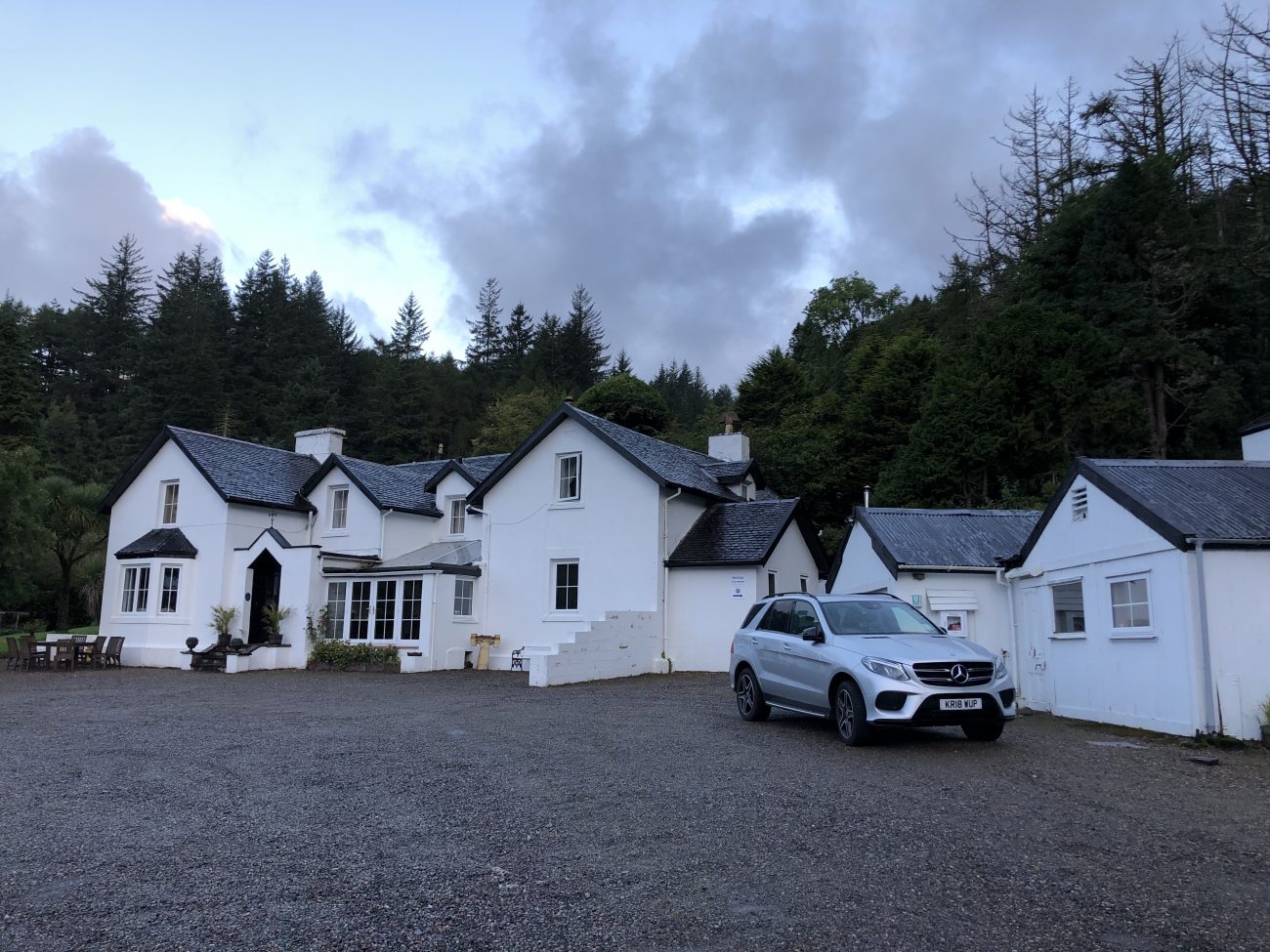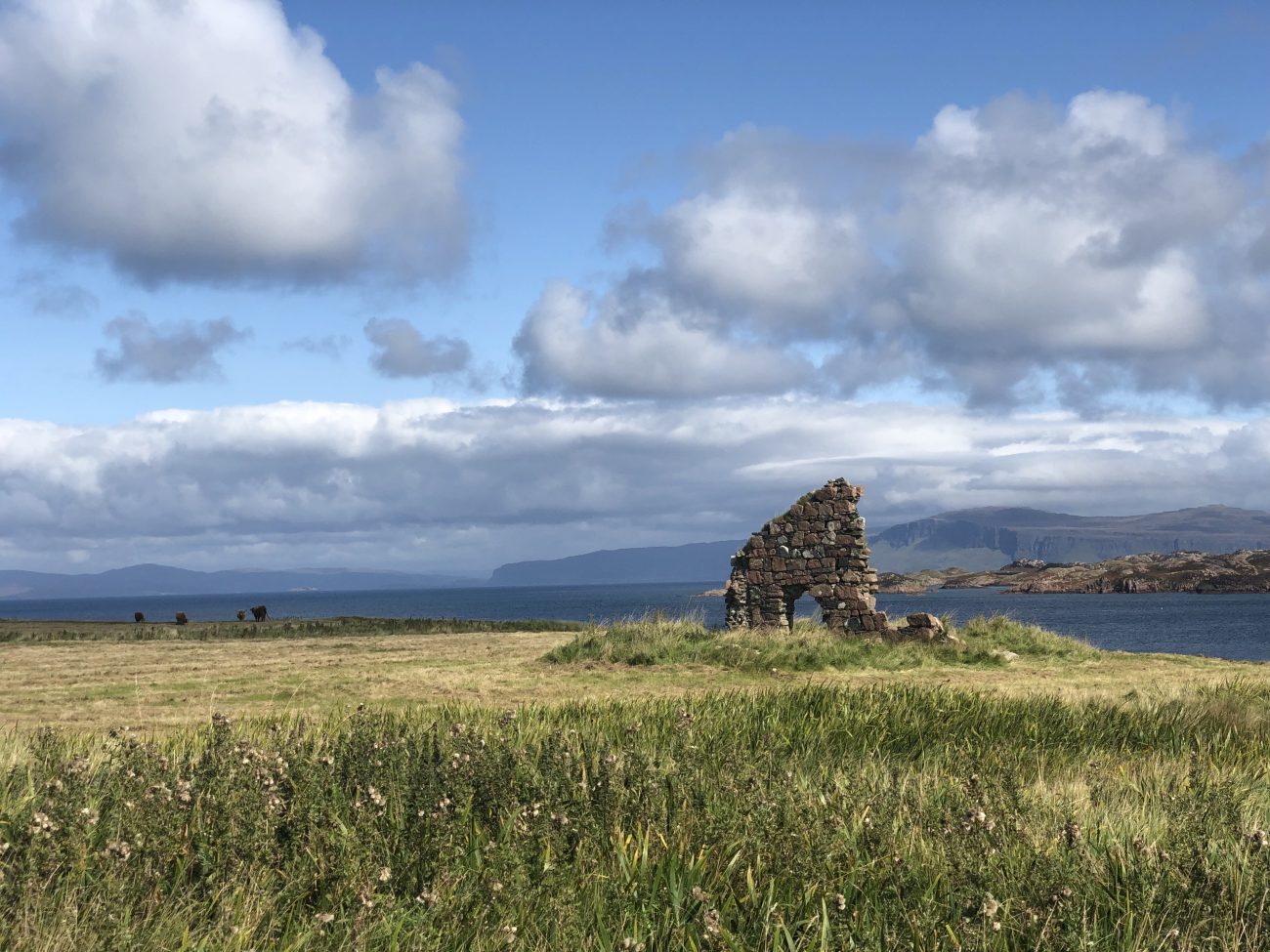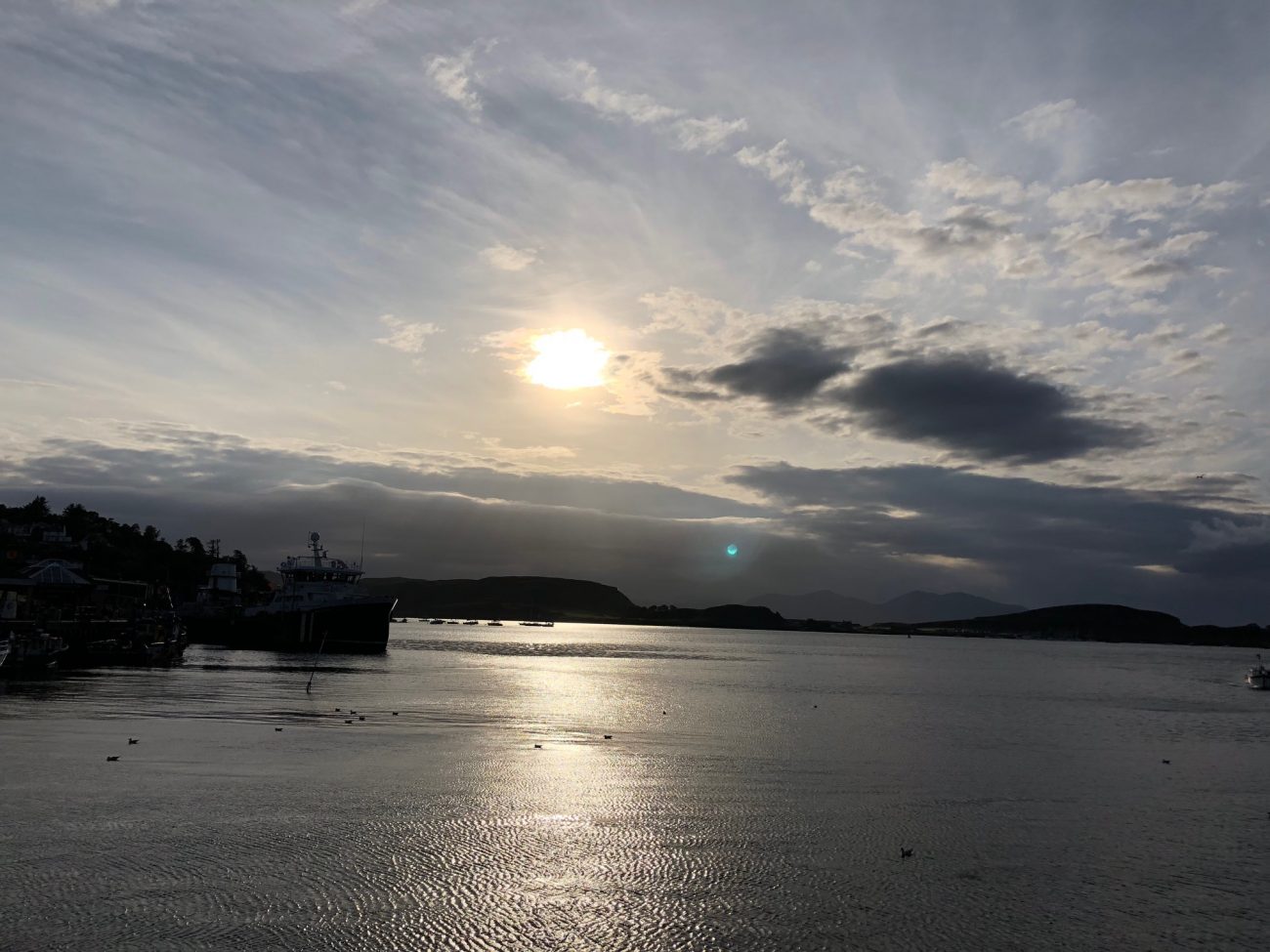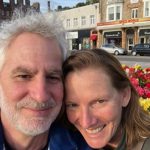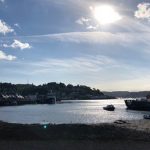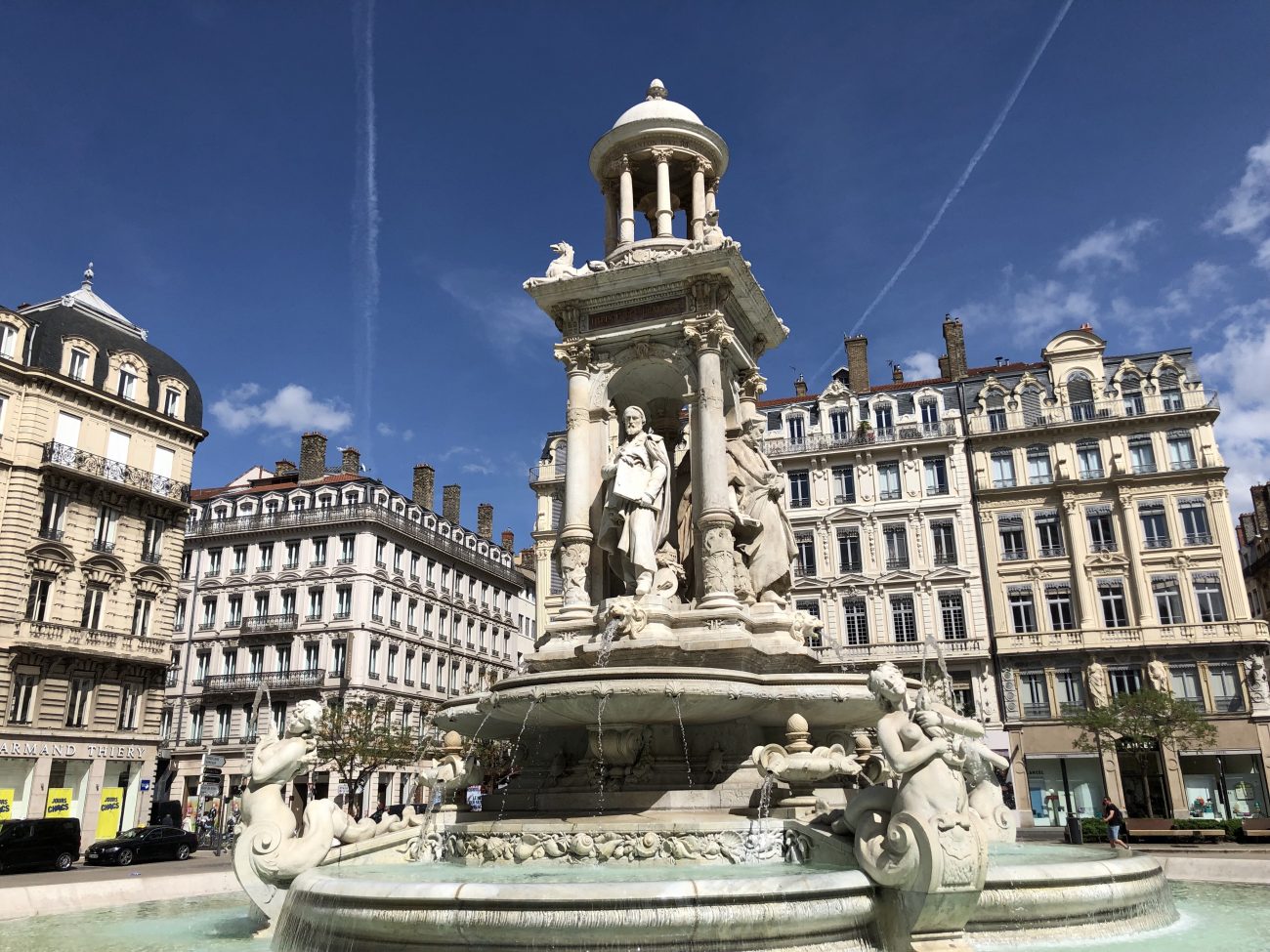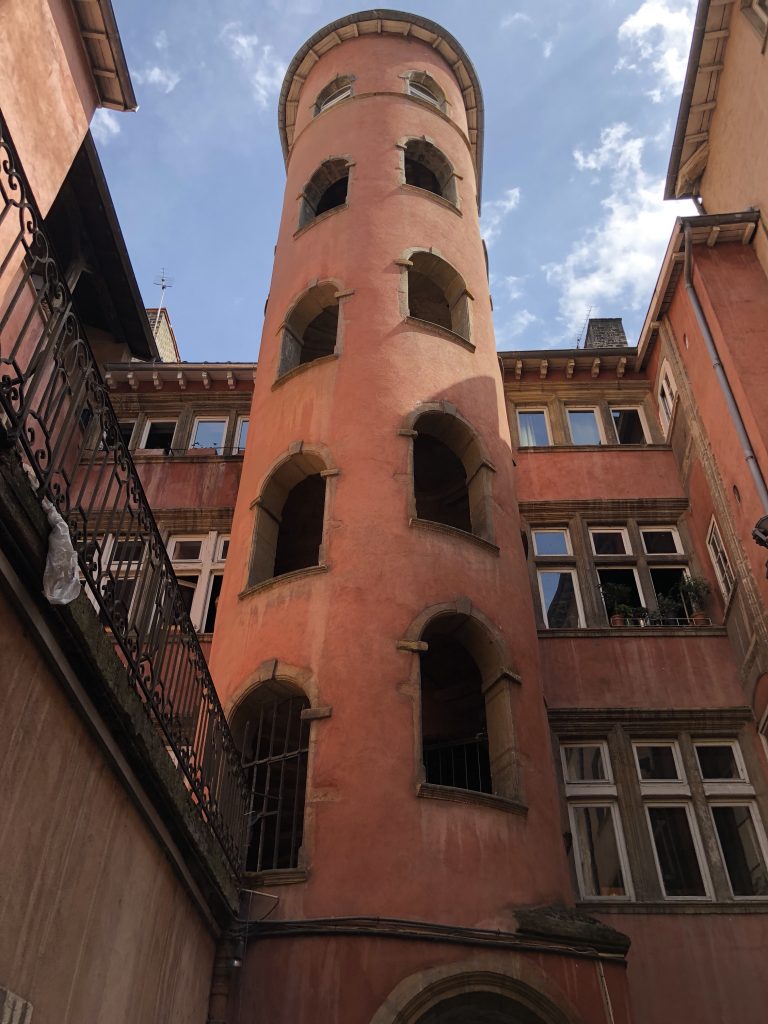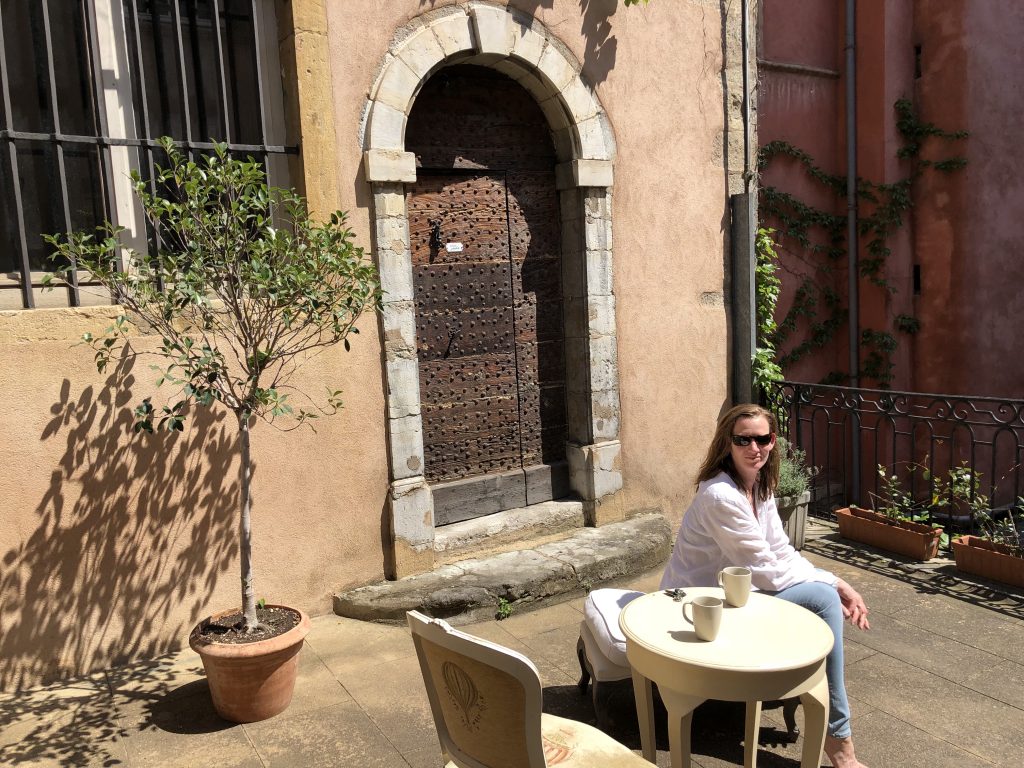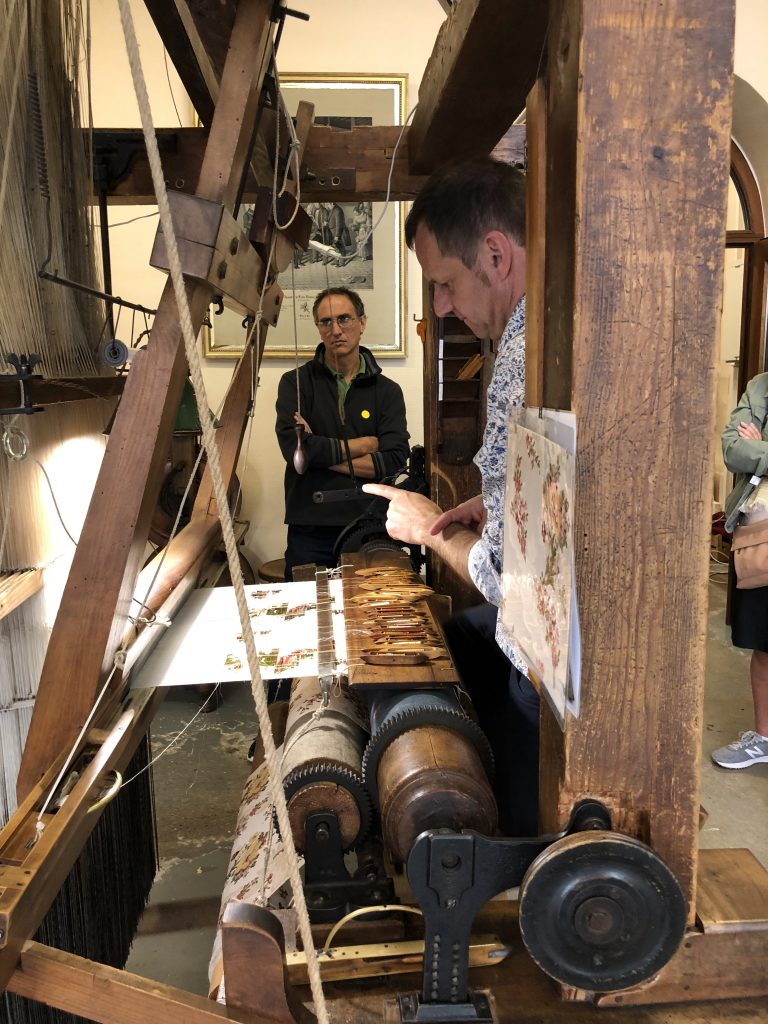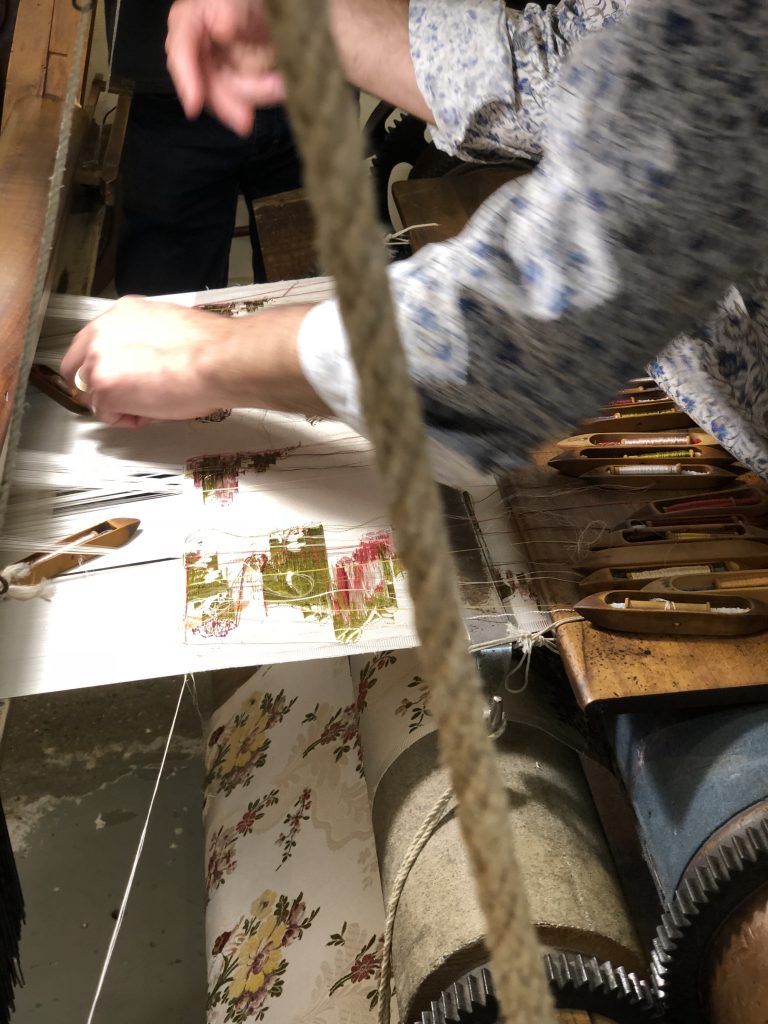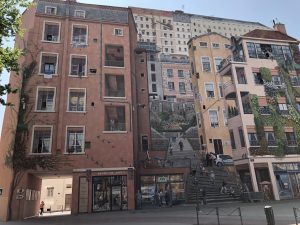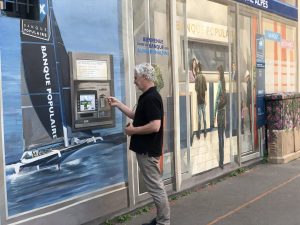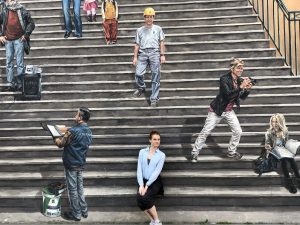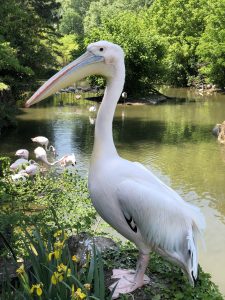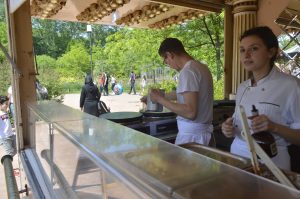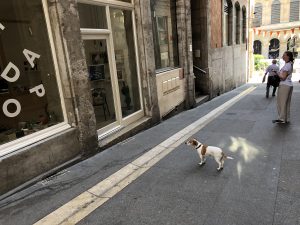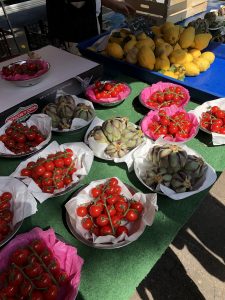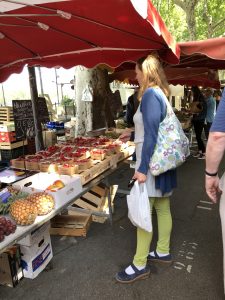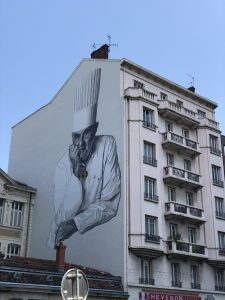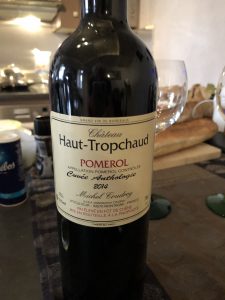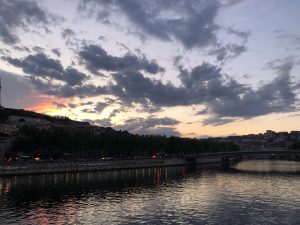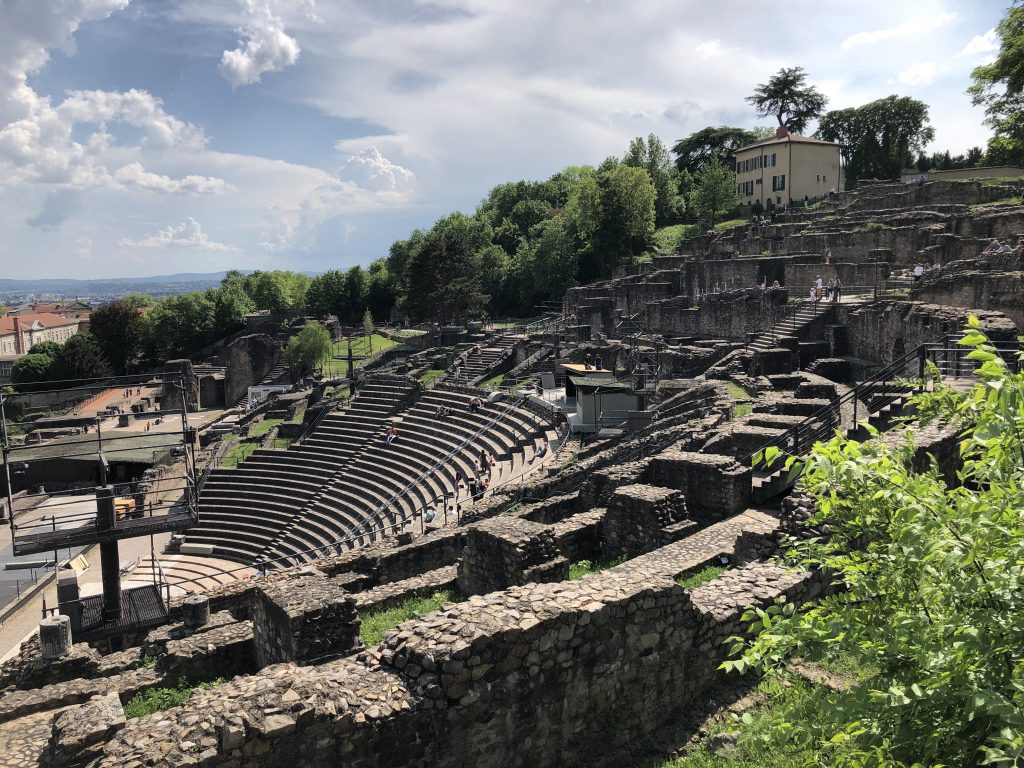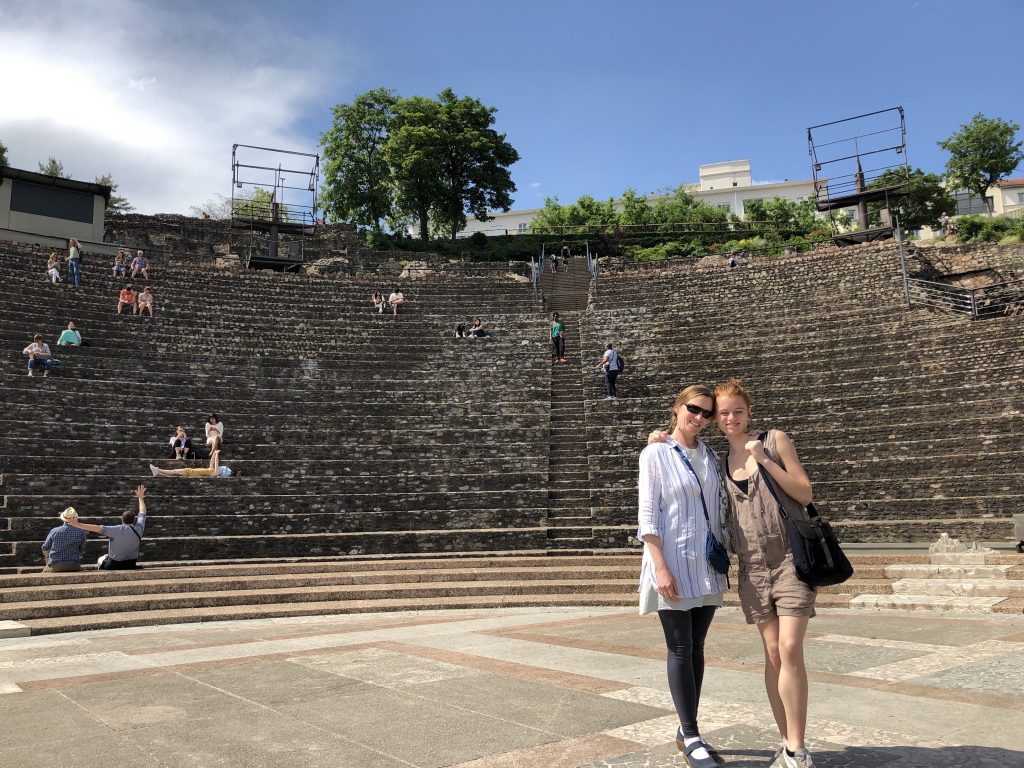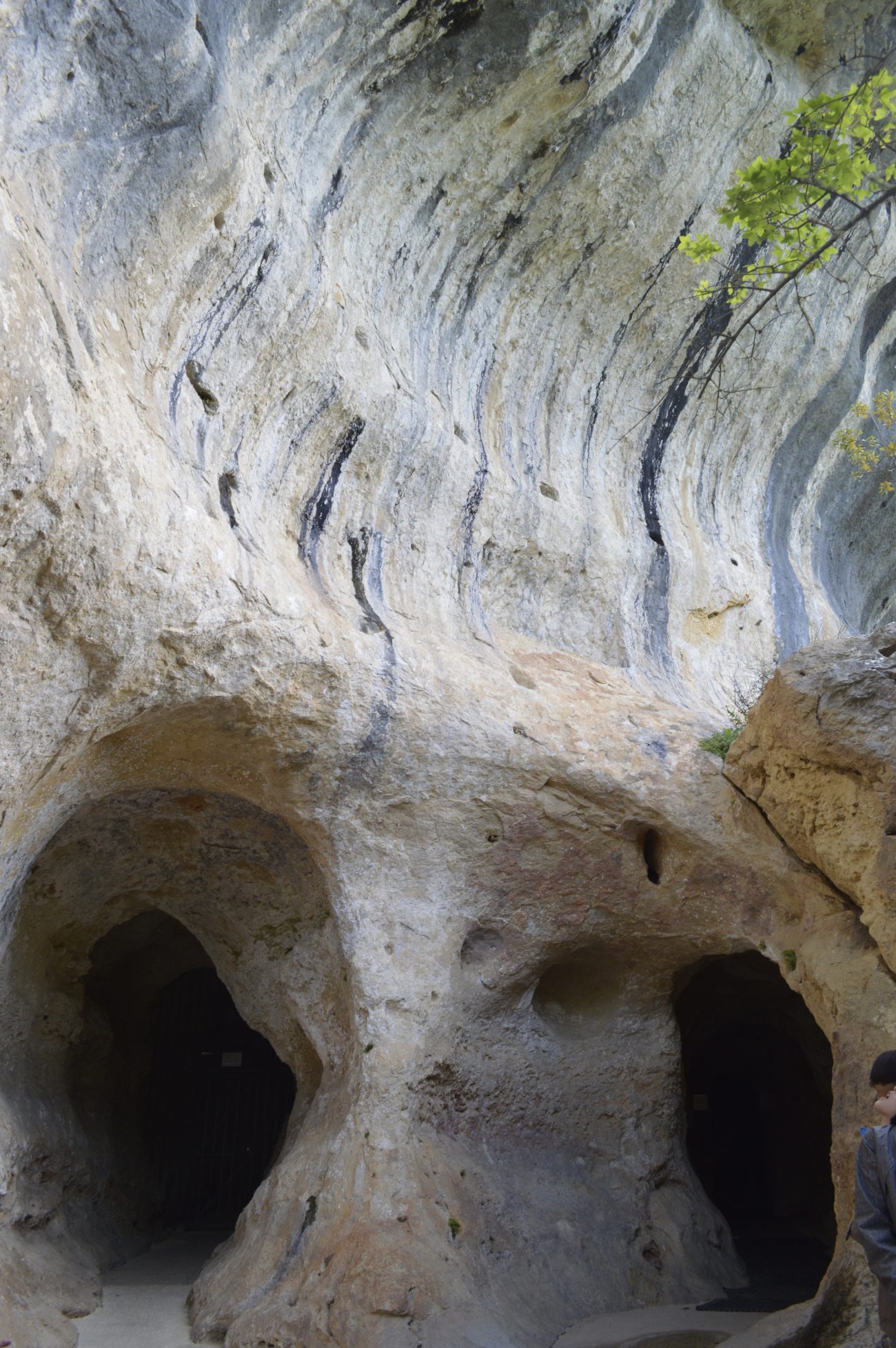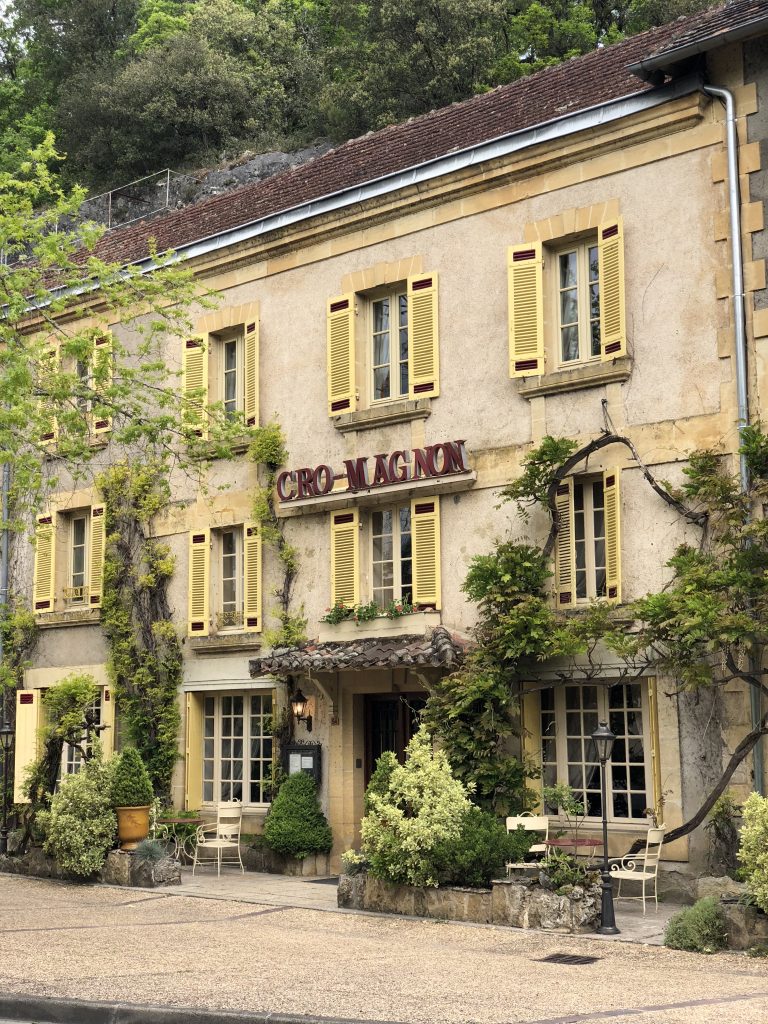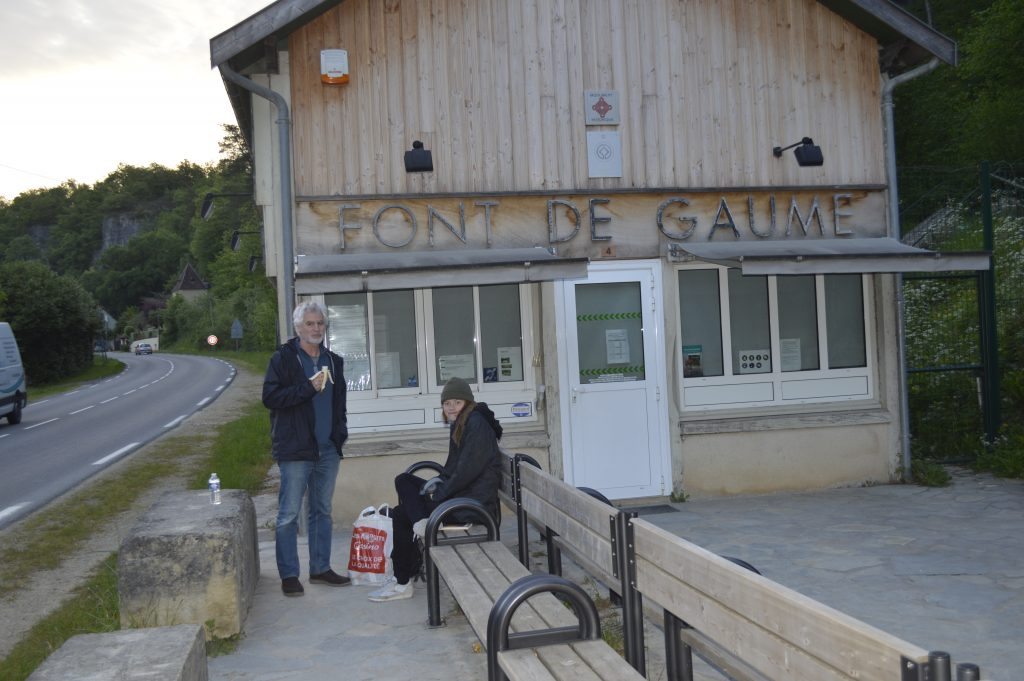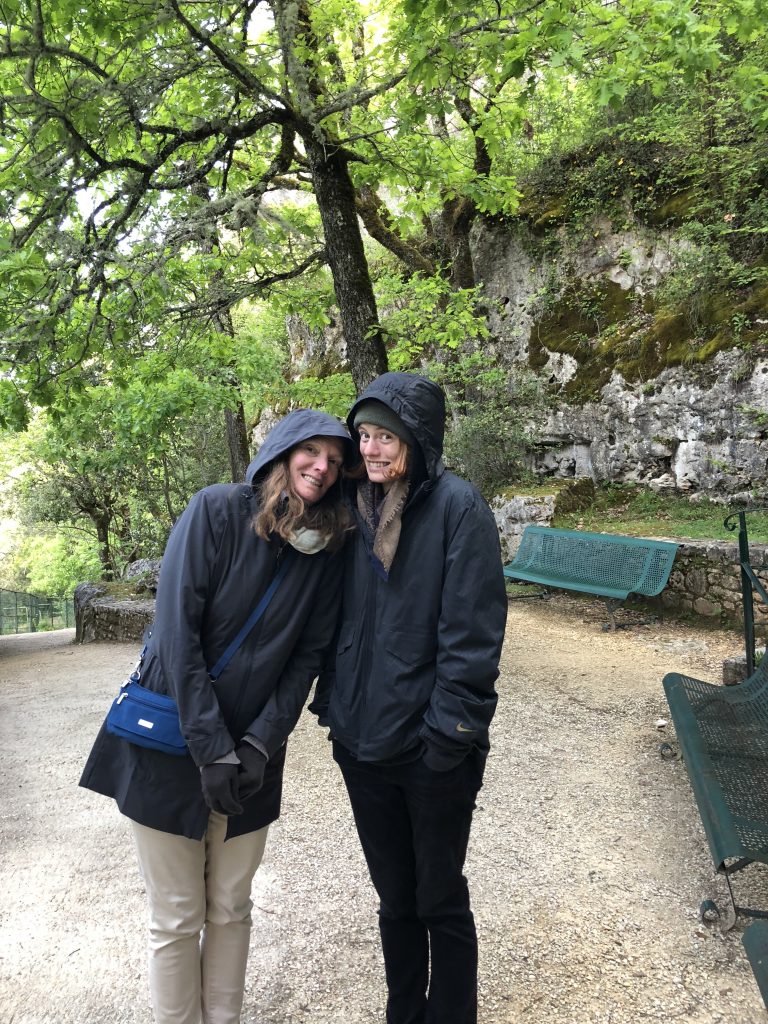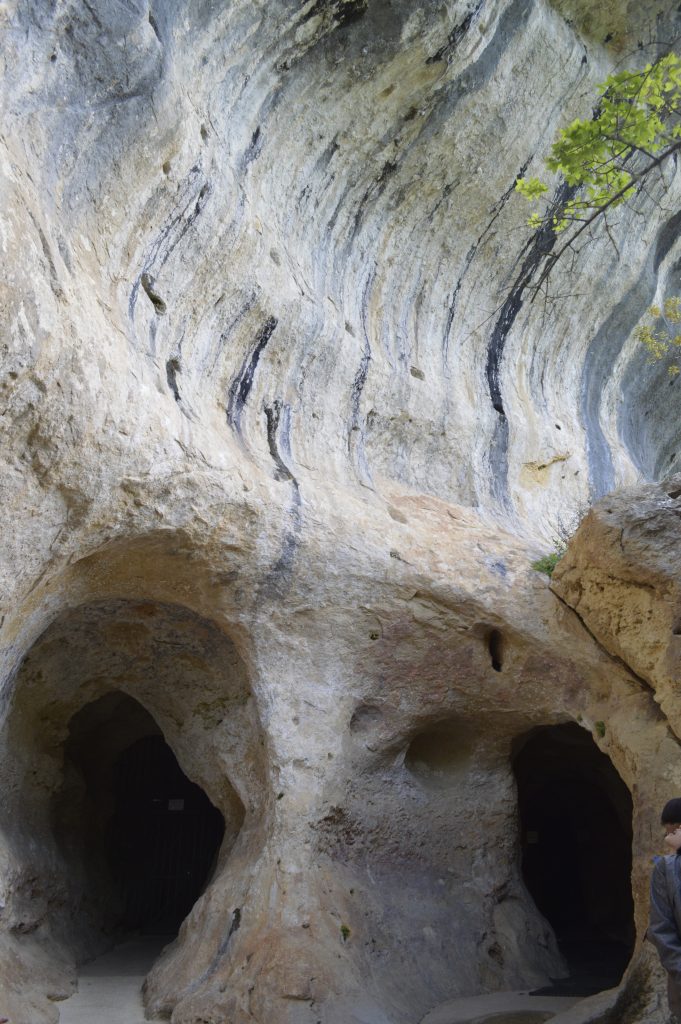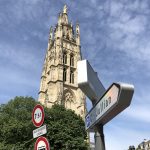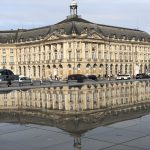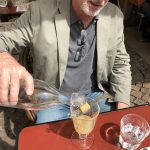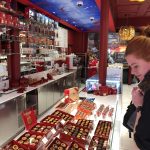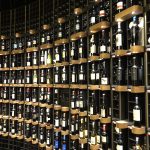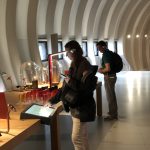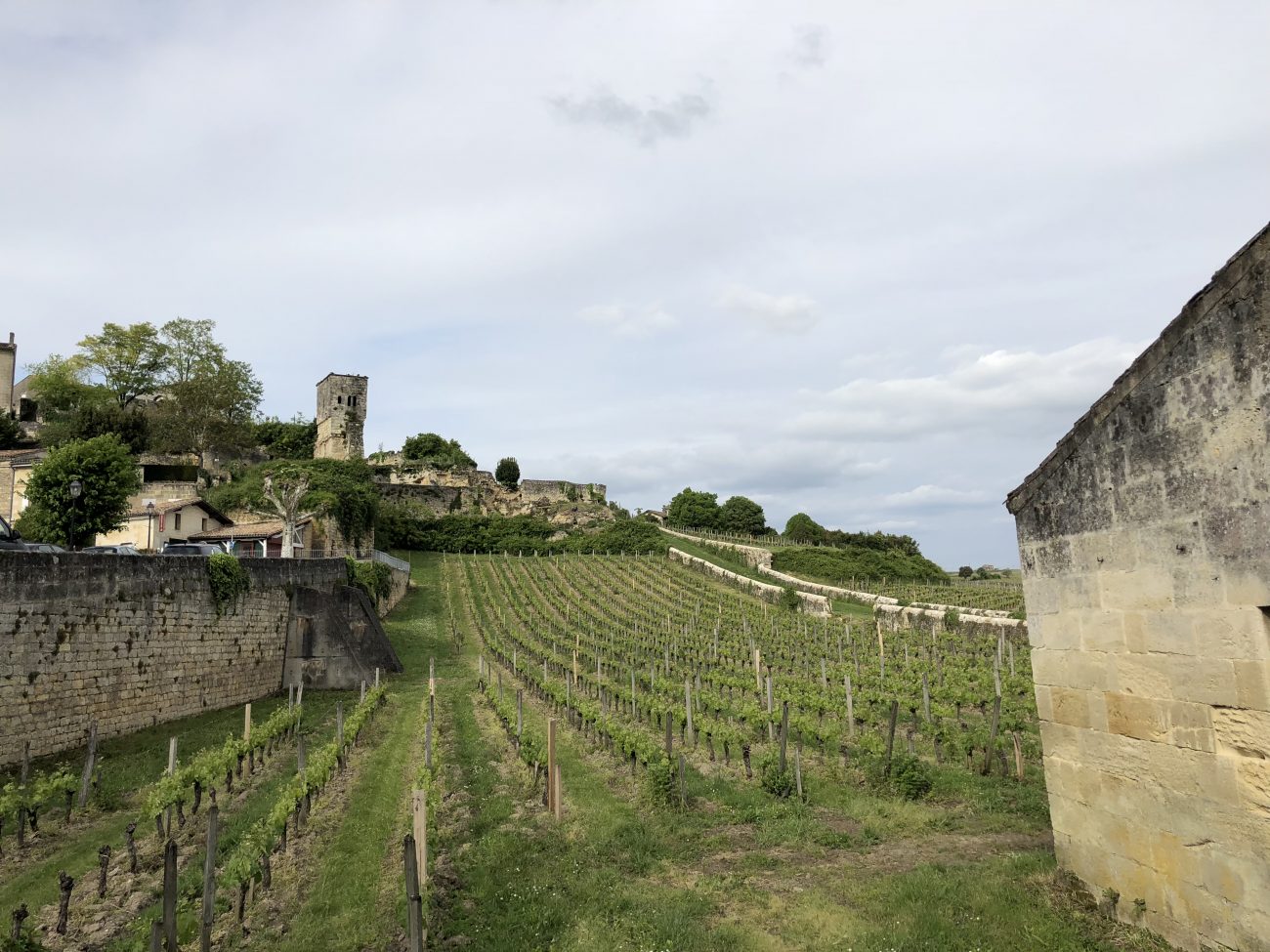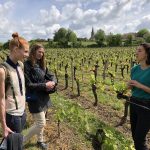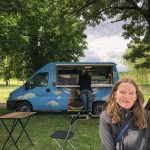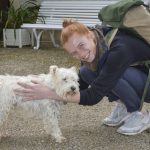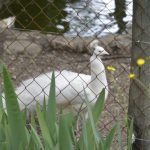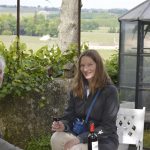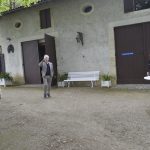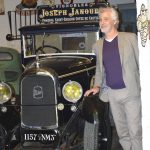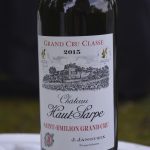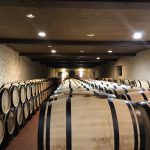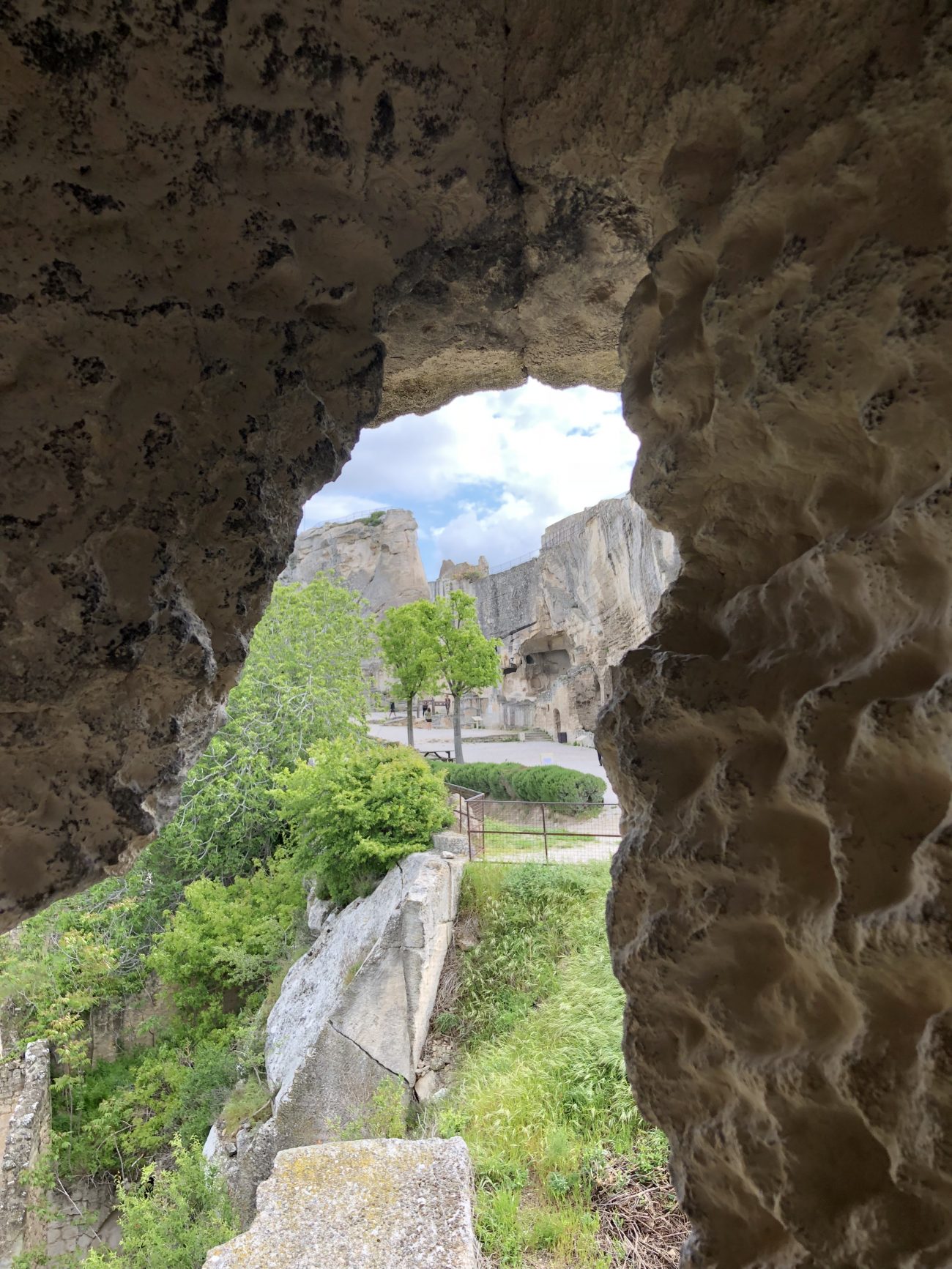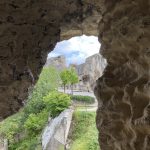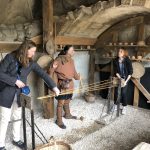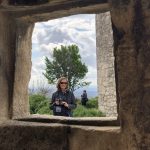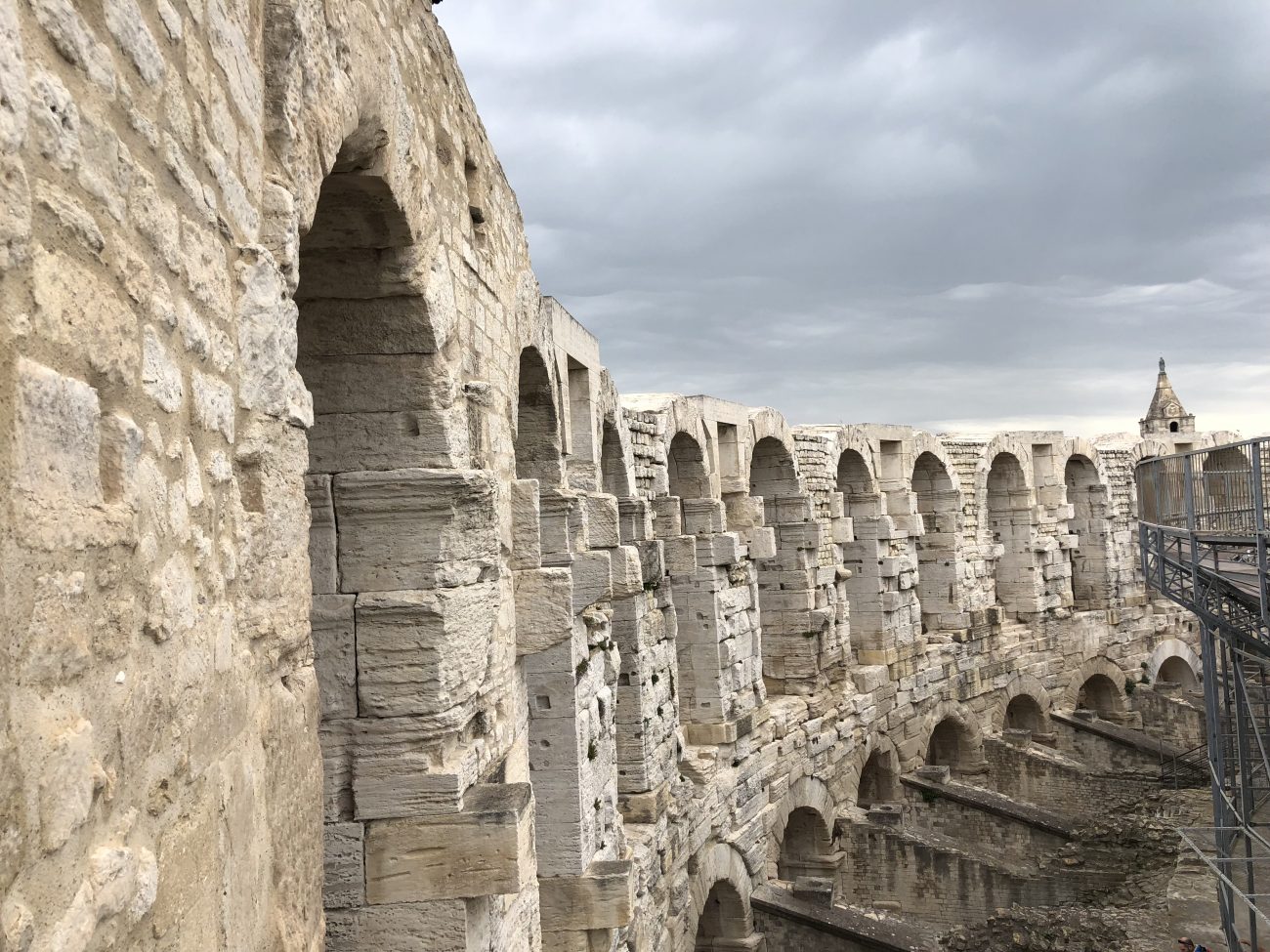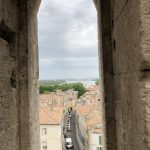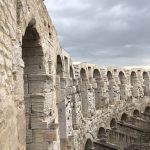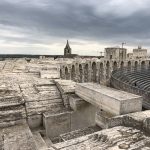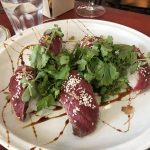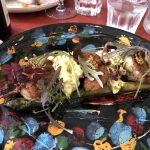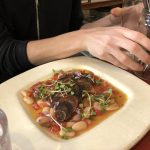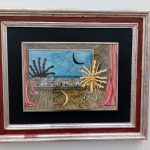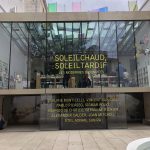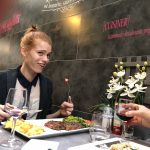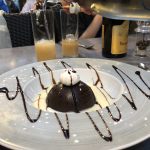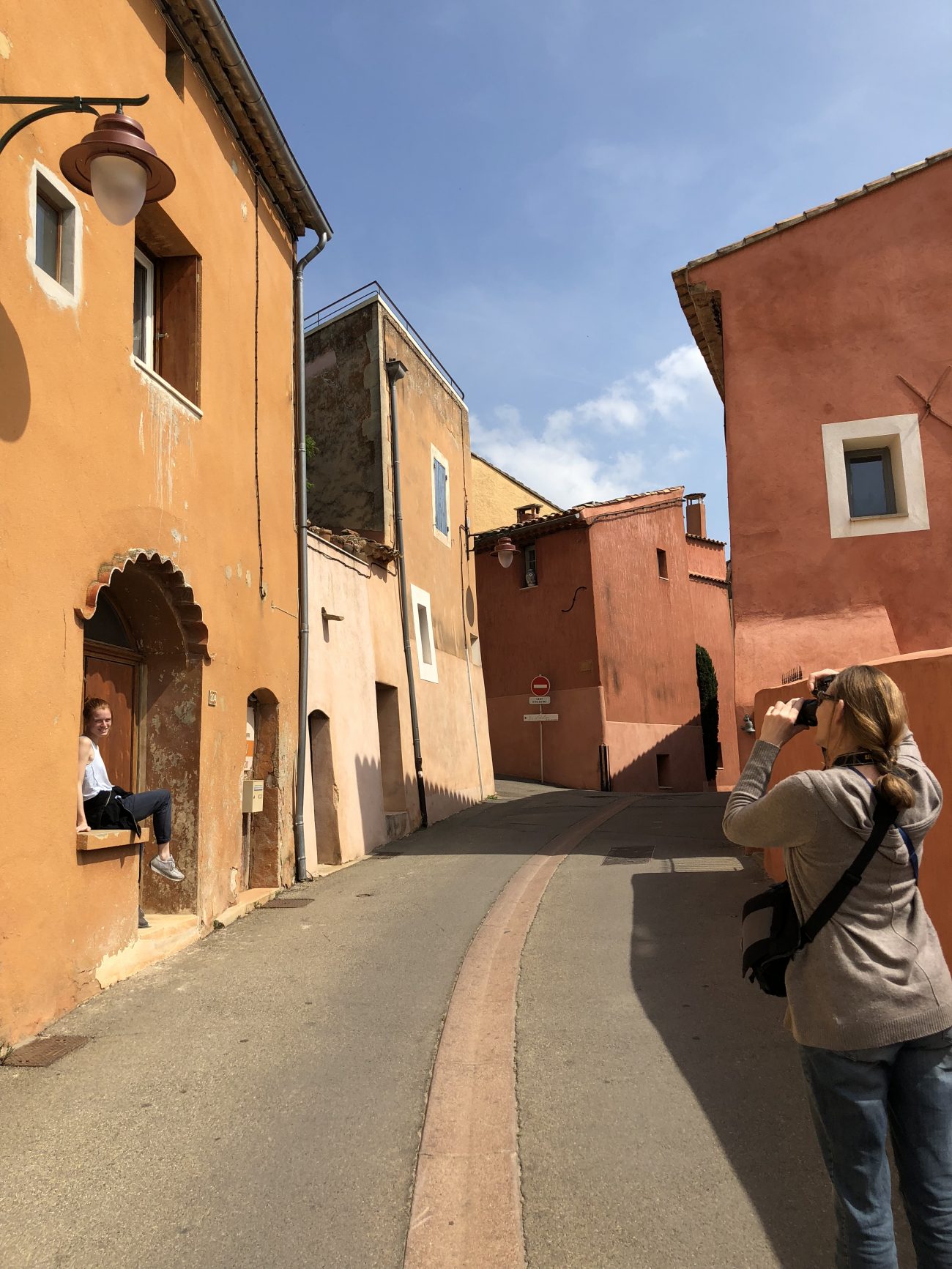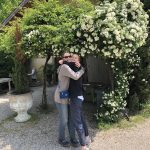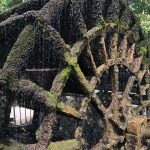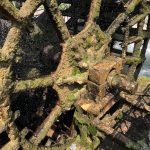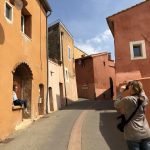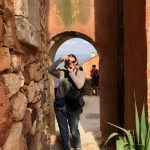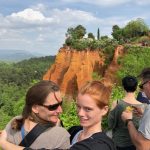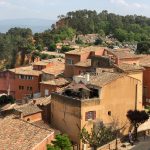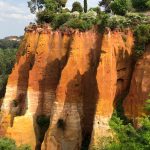The Isle of Mull is often just used as a stepping stone from Scottish mainland to the Isle of Iona, but the island, one of the Inner Hebrides off the west coast of Scotland, has unique wildlife and dramatic landscapes well worth a visit of its own.
After a train from Glasgow or Edinburgh, you arrive on the 40-minute ferry from Oban to Craignure on Mull’s east coast, where most people either board a bus heading west to Fionnphort and the Iona ferry, about a 75-minute ride on a single track road, or north along the east coast to Tobermory, the largest town (see more below). The buses and ferries are well synchronized.
We had rented a cottage for a month on Iona and planned a four-day stay at the Tiroran House Hotel, located in the Tiroran Forest on the Ardmeanach peninsula, which has a volcanic landscape and 200-million-year-old fossils at its western end. To get there, we had to take bus all the way across Mull, from Fionnphort to Craignure to rent a car and then drive back to the west for about 30 minutes. But once we reached the hotel with our gracious hosts Laurence and Katie MacKay, which is tucked down a long drive, far away on this sparsely populated island, we soon learned it was a wise choice.
The first day we headed into the forest to look for white tailed sea eagles, Europe’s largest bird of prey. One of 30 pairs on the island have a nest near the hotel, but the two chicks had died over the summer so there was little activity around the nest, and we were not lucky enough to see any. But after walking several miles in the forest and around the loch, we returned to the hotel to enjoy a glass of the hotel’s branded White Tail Gin. Guests gathered for a glass (powerful but smooth, like the bird) before a wonderful dinner in the hotel dining room.
On Day Two we drove to the northern part of peninsula where we headed east along Loch Scridain, with some breathtaking scenery on the narrow single-track road, and then turned north at Salen to Tobermory.
Tobermory is a picturesque little port town, Mull’s largest, with everything you want: a distillery where we bought an 18-year-old Ledaig (pronounced Lay-chek) finished in a sherry cask, great shops and restaurants. We started with chocolate, then oysters for lunch and finished with ice cream, and as a bonus found the Tackle and Books shop, where I purchased a book by Scottish writer Robin Jenkins, most famous for his 1955 novel, The Cone Gatherers. It was back to a casual dinner at the White Tail coffee shop with the MacKays and some new friends from London.
The weather was spotty the entire trip but Day Three was the rainiest so we headed west to Bunessan to visit Ardalanish Weavers, where you can see the Hebridean sheep, whose black and brown wool they weave, grazing on the hillocks around the building. From the main (single track) road, it’s a drive up a hill on a road that seems impossibly narrow. The weavers were at work on looms from the 1920s and 1950s, and we fed the shop, leaving with fabric and a wrap, drove back to our hotel, which had filled up, making dinner even more lively.

The next morning, we left early, driving slowly and taking in the peaceful morning, which is easy to do on Mull. We were the only ones on the narrow road, except for some Highland Cattle who did not want to move and held us up long enough that we barely made the bus back to Fionnphort. Dropping off the rental car involved leaving the keys on the seat, the door unlocked and car in a parking lot.
It’s said if you visit Iona once, you should do it three times. This was our fourth trip. The first was part of a tour of Scotland and we stayed for two nights in the Argyle Inn. The second, we couldn’t find a place to stay and booked three nights across the sound in a bed & breakfast in Fionnphort on the Isle Mull. That was the year we stumbled on a cottage to rent, which we booked for four weeks last year and four weeks again this year.
People have asked us how we could stay on such a tiny, remote island with so little to do. It’s only about three miles from north to south and a mile from east to west, with less than 200 residents. The small ferry that crosses the Iona Sound from Mull is the only entry point, and it brings tourists who want to see the Iona Abbey. But there’s so much more. Soon after many people set foot on the island, they feel something unusual. Peace, stillness, whatever you want to call it. Maybe what we write about this year’s trip will help explain.
Our cottage is right on the Iona sound and our stay began with so many days of sun we almost forgot we were in Scotland. On an island only a mile or so from east to west, we can wake up to the sunrise our our window, and later make a quick 15-minute to the west coast for the sunset. We planned our days around the weather, planning hikes when the sun was out and staying in to write, paint, knit, read or whatever else we wanted.
On the first day we headed north on the main “road” to the sandy beaches, multi-colored rocks and turquoise water, with views out to the islands of Staffa, the Dutchman’s Cap, and of course, Mull. Along the way, you walk through the village, where we like to stop at the Iona Craft Shop for an espresso and, on the first day, Debbie bought out all the Ioan wool in xx green. On the way back, the Low Door, a tiny specialty shop (I banged my head a few times), owned by the St. Columba Hotel, is a good stop for supplies.
The next day, it was on to St. Columba’s Bay on the southern tip of the island, where Columba landed in the year 563 and established the monastery that made the island famous. That trek means heading west to the golf course, which has more cow patties than golfers, and climbing south through the heather cover to the bay, where you find Iona rocks with serpentine, along with a labyrinth. Sheep will wander to the coastline to eat seaweed. It usually takes us about 3 to 4 hours, and we like to stop in the xx to visit Val, talk to her about the stones she’s collected and the jewelry she’s making. Maybe we buy some hoggit, the only break from the largely vegetarian diet we maintain when we’re here.
The weather stayed sunny so the next day we headed back to the north, up to the top of Dun I, Iona’s high point (it’s just a big rocky hill). There, you find views of the Atlantic to the west, north to the islands of Staffa, east to the sound and Mull, and south to the Hill of Angels. It’s usually windy, but we pack a lunch and find a sheltered spot to rest.
Friday was a day of rest, enjoying the dramatic skies, wandering through the Iona Abbey, stopping for an espresso or a dram (or both), shopping at the market, and as always, enjoying the peace, quiet and beautiful views.
So it’s not that tough to stay on such a tiny, remote island. There’s plenty of days with rain, maybe even a gale, but there’s always the skies, the rainbows and sense of peace makes it a bit more of a retreat than . a vacation.
The trip from Glasgow to the Isle of Iona is not quick and direct no matter how you do it. This time, we were heading straight to Iona without a car (they don’t allow them on the island anyway). From Queen Street Station, we caught the West Highland line on ScotRail. We’ve done it a few times before, but not always on such as beautiful day. About an hour into the three-hour journey, you begin to see the soft, green hills dotted with sheep and dramatic, steep-sided lochs, everything that makes you think about Scotland.
After two hours, the train splits at Crianlarich – one going north to Mallaig, where you can catch a ferry to the Isle of Skye, one to Fort William (all the back packers) and one to Oban, our destination. You get five minutes to hop off and get something in the tea room, before the two cars begin the last leg to Oban, a good-sized port town with the Oban Distillery, plenty of lodging, restaurants and seafood.
You have to leave early in the morning to make it from Glasgow to Iona in one day, and we did not, so we stayed in Oban. There are some hotels along the waterfront, as well as reasonably priced bed and breakfasts within walking distance of the train station and ferry. We stayed at the Kathemore Guest House, which was a nice B&B, about a 15-minute walk up a hill from the center of town. We picked up some supplies — always a good idea before heading to Mull or Iona (which has no ATM machines) — and had a leisurely dinner along the water.
In the morning, we caught the 11:10 ferry to Craignure on the Isle of Mull, before catching the 1:30 bus west across the island, about 75-minute ride. The buses are synchronized with the ferries, so they usually wait. They had double-decker buses for the first time offering great views. And we had time, so we had time to run across the street to the cafe for a sausage roll (Gary only) and an espresso. The weather changes fast on the islands, so after traveling through mist covered mountains through Glen More, the sky cleared and there were great views of the lochs and rugged landscape.
At Fionnphort, which sits on the western extremity of Mull, we caught the small Iona ferry for a 10-minute ride to Iona. We’ve included a photo from the ferry landing of a rainbow over Iona, from a previous trip. When we arrived on Iona, our hostess Barbara was waiting for us, and had us safely in our cottage by 3:30. Clouds were forming again, but there would be plenty of sunshine ahead of us.

Our last five days were in Lyon and we stayed in Cote Jardin, just down the street from our first apartment, but this one was something special. One of the Lyon Renaissance apartments, it was roomy by French standards with two bathrooms, a second floor loft for the bed and bar seating for the kitchenette.
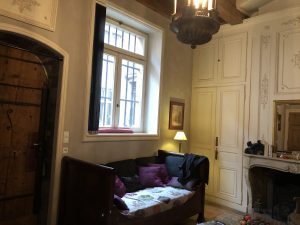
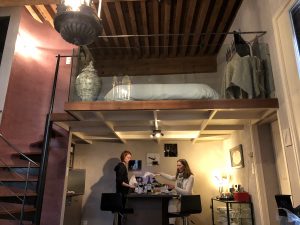
It opened into a courtyard with the 16th century rose tower rising in front of us (usually filled with tourists during the day). Entry was through a traboule on Rue de Boeuf, a small street where 300 silk looms operated in the 18th century. Climbing one set of stairs took us to a small courtyard outside our door where we could enjoy a coffee or glass of wine.
Speaking of the silk trade, Lyon was the last stop on the Silk Road and by 1744, 60,000 of the 100,000 people in Lyon were employed in the silk trade. We learned about this on Saturday when we made our way to the silk museum for a tour and demonstration. If necessary, you can schedule one in English. It’s located in a neighborhood where 40,000 looms once produced fabric. One was still in operation and we saw the process — more than 7,000 silk threads were used to create beautiful fabrics at a pace of about a meter a day. While many of those weavers lost their head in the French Revolution, Napoleon Bonaparte’s thirst for silk revitalized the industry, which continues to thrive today.
A walk through the surrounding neighborhood brought us to a giant fresco, which Phyllicia said was the largest of its kind in Europe.
The weather stayed warm and sunny throughout our stay so a walk across the Rhone to the park and free zoo was in order, topped off by crepes (Phyllicia got the homemade Nutella, Debbie chocolate and me the Grand Marnier).
The days got lazier, the food was spectacular from start to finish, the region’s wines were a delight and we frequented the open market across the Saône to cook a couple dinners and enjoy the Saint-Emilion and Pomerol we brought back with us. We visited Phyllicia at work where she teaches English to Lyon professionals, a site next door to Halles de Lyon-Paul Bocuse, an indoor market where we enjoyed lunch.
The last day was a tour of the Roman amphitheater, built after Lyon became a colony of the Roman Empire called Lugdunum in 47 BCE.
What can you say about Lyon, a beautiful, manageable city that is so close to Provence. We came to visit Phyllicia and though that was the highlight for us, we also fell in love with the city.

We’re not ones for rising early or waiting in lines, but we arrived at Font-de-Gaume at 7 am to secure a morning tour of the polychrome animal drawings estimated to be 15,000 years old and the oldest example you can visit. It helped we were strategically located five minutes away at Hotel Cro-Magnon. Only 78 people are allowed in each day to protect the cave walls.
Unable to take photos and touch the cave walls, we entered the narrow cave and learned quickly it was worth the wait. The link above should give you an idea of what we saw but to be there and imagine these drawings, some showing motion among the bison and horses, was remarkable. And they’re serious about not touching the walls. A Swedish man leaned against the wall and was immediately scolded by our otherwise lovely guide until he acknowledged what had happened.
Following our day in the St. Emilion vineyards, we hopped the train to Bordeaux, a 35-minute ride to the sizable city where Phyllicia led us on a walking tour around some of the sights, including the “mirror” at Place de la Bourse, before we stopped for lunch (and an absinthe) on the sunny afternoon.
We continued on the tram to the La Cite du Vin, the wine museum where we learned everything we need to know about wine making and more before we discovered Phyllicia’s hidden motive in taking us to Bordeaux — the caneles, a sweet treat we purchased at a colorful shop.
We headed back to St. Emilion for a memorable fireside dinner at L’Envers du Decor: delicious oysters followed by a beef dish with Bearnaise sauce, a 2010 Saint Emilion Grand Cru, all topped off with soufflés and a 20-year-old cognac.

What can you say about St. Emilion, the little medieval town located a half hour away from Bordeaux that makes some of the world’s best wine. We knew about the wine, but the scale of the area with easy access to more vineyards than you can handle — and the lack of pretense when you arrive — made me wonder why I ever went to Napa and Sonoma (I guess because they’re closer to home). Wine stores and tasting rooms in town are everyone, but the experience was the next day when we decided to walk down the road about 30 minutes to a few small vineyards. We were in for a surprise, and thanks to Phyllicia for arranging it.

The first winery was La Chateau Saint Christophe, a tiny family owned vineyard in the seventh generation. Xavier, of the sixth generation, greeted us on our walk up and set out four wines, explaining everything we needed to know about the Bordeaux region, benefits of the limestone and clay soil, why 2009 and 2010 were such good years, and much more (though he did say there was no such thing as a good wine, just a good bottle). Being our first stop, I was cautious but walked away with a 1998 Grand Cru.

Next stop was Chateau Coudert where Claire provided a tour, beginning in the vineyard. Claire’s walk through of the process, the blending of Merlot and Cabernet Franc, was a perfect introduction to the tasting, and it was easy to see why 2010 was such a good year — and that was the bottle we purchased. But we didn’t leave then, there was a food truck we had ordered duck and burgers with fois gras and guacamole. That may seem like a strange combination but like everything else here it worked. The 2010 we drank with it didn’t hurt.
And off to the third and final stop, and the biggest surprise, Chateau Haut Sarpe, a sprawling property with a white peacock, plenty of other birds and no one around. That is until Jean-Philippe and his dog met us. He introduced himself as the gardener, though we learned he is much more, and he took us on a tour of the property, where we got to taste a glass of the 2016 Merlot and a glass of the 2016 Cabernet Franc in separate glasses, and then blend them ourselves, as they will do soon to make their Grand Cru. He also let us pull the Merlot from the barrel, quite a treat.
He took us to the tasting room where he opened a bottle of 2015, which he said showed “great promise.” He gave us three glasses and told us to take the bottle and walk around the property. He asked us to leave the bottle on a barrel when we were done and take the glasses with us. And before he left, he called Gary into a barn where there were two French roadsters, 1927 and 1929.
So what do we think of visiting St. Emilion? All the tastings were free, the bottles we purchased were no more than 20 euros, and it was as relaxed as wandering on your grandmother’s farm. More than that, everyone we met was happy, friendly and made us feel at home. And why not, you’re in St. Emilion.
Finally, some insight from our hosts:
- Vines, like us, can last 100 years, and they may produce less, but what they do is very good
- Wine is alive and will do want it wants
- There is no such thing as a good wine, just a good bottle
- Wine does not like to travel much
- When a wine is too young, the flavors don’t blend; they need time to become friends
I read that if you want to go to Le Baux de Provence you need to get there early before the rest of the world shows up, and it was good advice. After walking through the village, we were among the first to enter the Chateau Des Baux de Provence, a thousand-year-old fortress with spectacular views over the Provence countryside.


There was a catapult, ruins of the fortress and even some old fashioned rope making skills for Debbie and Phyllicia.

From there we climbed to the top where there is a view of the Les Baux valley, or Vale of Hell, its white sandstone cliffs getting their name from Dante’s description of Hell in the Divine Comedy, which was inspired by this valley.

As the crowds arrived and the rain began to fall, we escaped for the five-hour drive to St. Emilion where we watched the sunset. Not a bad day.

What to do in one day in Arles with the wind blowing dust in our eyes and rain threatening to pour down at any moment. We started by walking the city and then visiting the Amphitheatre (Arena d’ Arles), built by the Romans circa 90 AD, which held 21,000 people for chariot races, gladiators and more light entertainment.
Phyllicia’s friend Martin, an architect from Nîmes, met us and we walked to lunch, which was, of course, delicious.
The first rain drops came down so we opted for the Van Gogh Foundation exhibit of work by Van Gogh, Picasso, Monticelli, Nash, Chirico and more.
We said farewell to Martin, bought a bottle of wine and hid from the rain before dinner at reservation-only Pergola, where we learned that if you can’t run with the bulls or fight the bulls, you can eat a bull rib and it’s delicious, as is the dome du chocolat and everything else.
Tomorrow we get on the road to Les Baux de Provence, Avignon and then on to St. Emilion.

With Lyon as our home base, we carved out a 6-day tour of Provence and the Bordeaux region. I researched some routes from other blogs, so I’m returning the favor.
We left Lyon early down the A7 to Avignon and headed east for a lazy drive through western Provence to Arles. First stop was L’Isle-sur-la-Sorgue, where the Sorgue River was split into channels to drive water wheels, and now is fueled by what some say are more antiques dealers in the little town – some 300 of them – more than anywhere else in France, except Paris.

From there, we continued through the Luberon mountain to beautiful Fontaine-de-Vaucluse, and Gordes, perched on a hilltop.

And on to Roussillon, a multi-colored village built on ochre, where we spent hours before making our way to Arles before dark.
- 1
- 2
